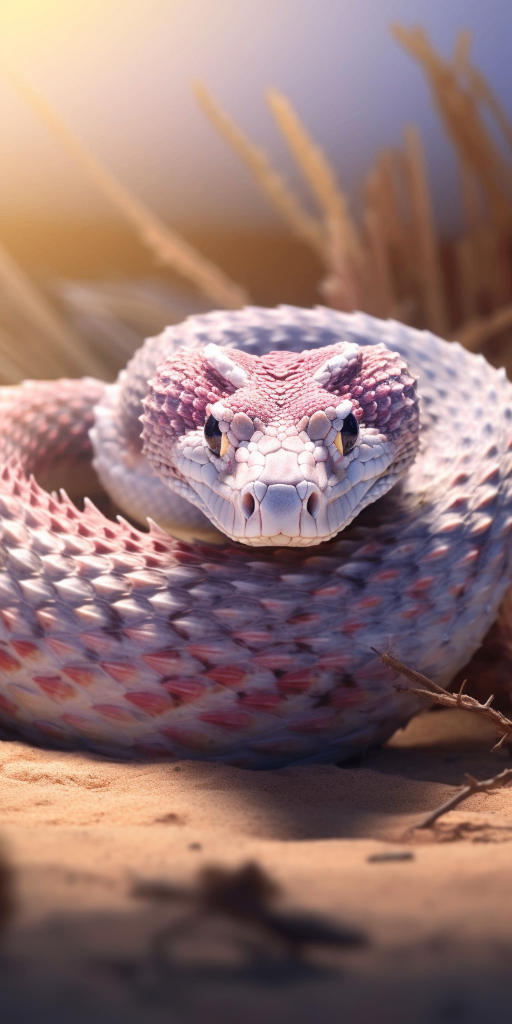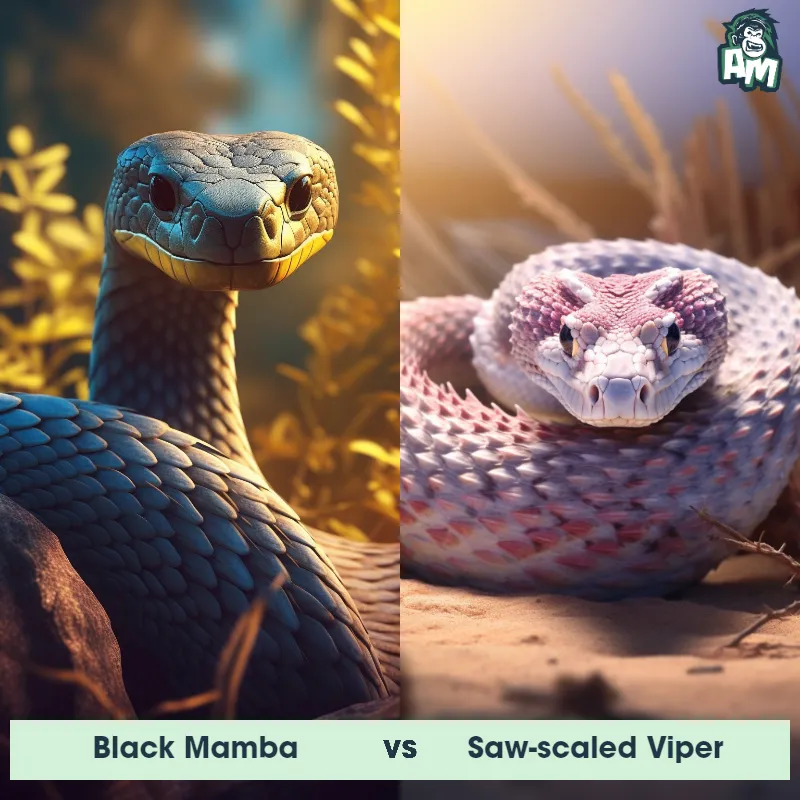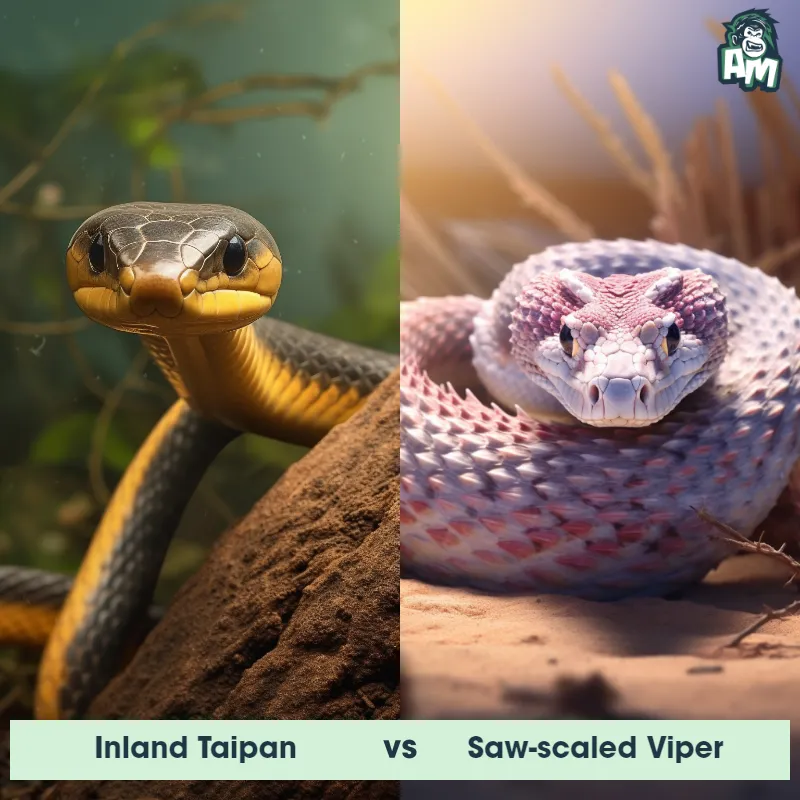The Saw-Scaled Viper
The Saw-Scaled Viper, also known as Echis carinatus, is a venomous snake found in parts of Asia, Africa, and the Middle East. It is characterized by its small size, typically measuring around 60-75 centimeters in length, although some individuals can reach up to 90 cm. It has a stout body and a triangular-shaped head with small, upturned scales on its snout. The coloration of the Saw-Scaled Viper varies, but it often has a reddish-brown or grayish background with distinct patterning consisting of dark chevron-like markings along its back. This species is well-known for its ability to produce a high-pitched, saw-like hiss when threatened, using specialized scales on its sides that rub against each other.

| Saw-Scaled Viper | |
|---|---|
| Size | 50 cm (19.7 in) in length |
| Weight | 100 g (3.5 oz) |
| Speed | Speed: 12 mph (19.31 km/hr) |
| Key Strength | Quick strikes and highly toxic venom |
| Biggest Weakness | Small size and vulnerability to larger predators |
| Scientific Name | Echis carinatus |
| Family | Viperidae |
| Habitat | Desert and dry savannah |
| Geography | Middle East, Asia, and Africa |
| Diet | Small rodents, lizards, and birds |
| Lifespan | 8 years - 15 years |

The Saw-Scaled Viper
The Saw-Scaled Viper, also known as Echis carinatus, is a venomous snake found in parts of Asia, Africa, and the Middle East. It is characterized by its small size, typically measuring around 60-75 centimeters in length, although some individuals can reach up to 90 cm. It has a stout body and a triangular-shaped head with small, upturned scales on its snout. The coloration of the Saw-Scaled Viper varies, but it often has a reddish-brown or grayish background with distinct patterning consisting of dark chevron-like markings along its back. This species is well-known for its ability to produce a high-pitched, saw-like hiss when threatened, using specialized scales on its sides that rub against each other.
Fun Fact: The Saw-Scaled Viper holds the unfortunate title of being responsible for the most snakebite fatalities among all venomous snakes in the world.
| Saw-Scaled Viper | |
|---|---|
| Size | 50 cm (19.7 in) in length |
| Weight | 100 g (3.5 oz) |
| Speed | Speed: 12 mph (19.31 km/hr) |
| Key Strength | Quick strikes and highly toxic venom |
| Biggest Weakness | Small size and vulnerability to larger predators |
| Scientific Name | Echis carinatus |
| Family | Viperidae |
| Habitat | Desert and dry savannah |
| Geography | Middle East, Asia, and Africa |
| Diet | Small rodents, lizards, and birds |
| Lifespan | 8 years - 15 years |
Saw-Scaled Viper Matchups
We use AI to simulate matchups between the Saw-Scaled Viper and other animals. Our simulation considers size, strength, and natural predatory behaviors to determine the most likely outcome.

Can't find the Matchup you want?
Create Your Own MatchupSaw-Scaled Viper: Diet, Predators, Aggression, and Defensive Behaviors
What do Saw-Scaled Vipers eat?
Saw-Scaled Vipers primarily feed on small mammals such as rodents, birds, amphibians, and even insects. They are ambush predators that rely on their excellent camouflage and quick strike to catch their prey.
Do Saw-Scaled Vipers have any predators?
Saw-Scaled Vipers face predation from birds of prey, mongooses, and other snakes. However, their cryptic coloration and fast striking ability make them a challenging target for predators.
Are Saw-Scaled Vipers aggressive?
Saw-Scaled Vipers are known to be highly aggressive and will strike quickly and repeatedly if threatened. This behavior, combined with their potent venom, makes them one of the most dangerous snake species in their range.
Do Saw-Scaled Vipers engage in combat?
Saw-Scaled Vipers have been observed engaging in combat with other snakes, especially during the breeding season or when competing for resources. These combat interactions involve intertwined bodies and attempts to overpower their opponent.
How do Saw-Scaled Vipers defend themselves?
Saw-Scaled Vipers have a few defense mechanisms to protect themselves from threats. They will often inflate their bodies, hiss loudly, and adopt a striking posture when feeling threatened. If these displays fail to deter the threat, they will not hesitate to deliver a swift bite with their venomous fangs.
What is the biggest weakness of Saw-Scaled Vipers in a fight?
One of the biggest weaknesses of Saw-Scaled Vipers in a fight is their relatively small size compared to other predatory animals. This makes them vulnerable to larger predators that can easily overpower them in physical confrontations. Additionally, their aggressive nature can sometimes lead them to engage in unnecessary conflicts, putting themselves at risk.
Fun Fact: Saw-Scaled Vipers are primarily nocturnal, spending their days hidden in crevices or burrows to avoid high temperatures, and actively hunting prey during the night.
Fun Fact: Unlike many snake species that give birth to live young, the Saw-Scaled Viper is ovoviviparous, meaning that the female retains the eggs inside her body until they hatch, giving birth to fully-formed and independent baby snakes.













